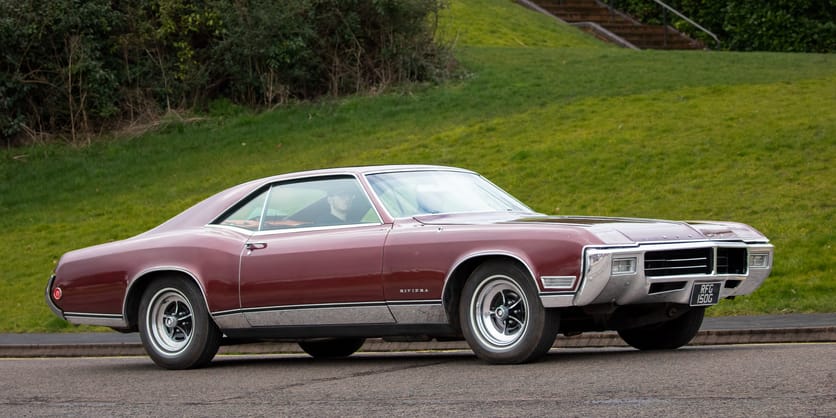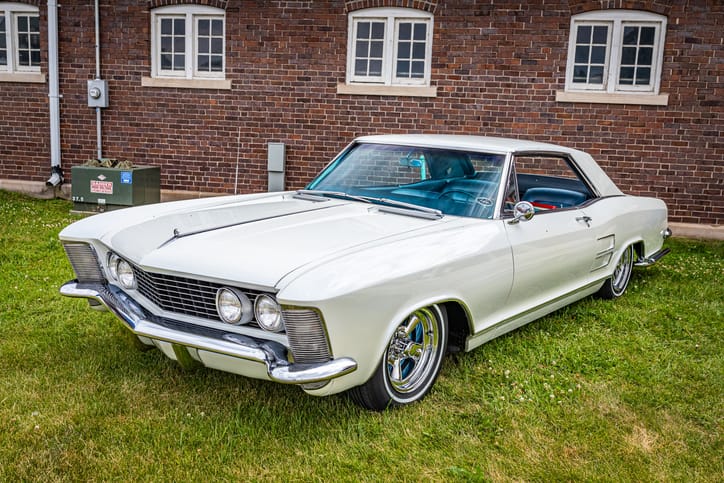The Buick Riviera: A Cruise Through Personal Luxury

The Buick Riviera, a name synonymous with elegance and American luxury, graced roads for nearly four decades. Debuting in 1963, it carved a niche as General Motors' first personal luxury car, competing with the likes of the Ford Thunderbird and Chrysler Newport. This article takes you on a journey through the Riviera's legacy, exploring its design evolution, performance highlights, and enduring impact on the automotive landscape.
A Visionary Debut (1963-1965):
The brainchild of Buick designer Harley Earl, the 1963 Riviera stunned the world. Its sleek, aerodynamic lines, inspired by the turbine-powered XP-8 Firebird concept car, set a new standard for automotive design. The "boat-tail" rear end, a signature Riviera feature for its early years, became instantly recognizable. The interior offered a luxurious haven, with plush seating, premium materials, and innovative features like a hidden ashtray that emerged at the touch of a button.

Under the hood, the Riviera boasted powerful V8 engines, initially a 401 cubic inch option and later a 425 cubic inch powerhouse. These engines provided ample power for cruising, solidifying the Riviera's image as a car built for effortless performance.
Evolving Elegance (1966-1973):
The Riviera continued to impress throughout the late 1960s and early 1970s. The 1966 model year saw a revised design with a more pronounced crease running along the body side. The signature boat-tail remained, but became more integrated into the overall design. Engine options continued to prioritize power, with the 430 cubic inch V8 becoming a mainstay.

The 1971 redesign marked a significant shift. The boat-tail was gone, replaced by a more formal and squarer rear end. The overall design adopted a more formal and luxurious look, catering to a clientele seeking a sophisticated ride. This era also saw the introduction of innovative features like hidden headlights and a power moonroof.
The Age of Downsizing (1974-1979):
The mid-1970s brought a new challenge: the oil crisis. The Riviera responded with downsizing, with smaller, more fuel-efficient engines replacing the previous behemoths. Despite the change, the car retained its luxurious character. The interior continued to offer premium materials and comfort, while the exterior design remained stylish and elegant.
A Return to Grandeur (1980-1989):
The 1980s witnessed a resurgence of interest in larger, more powerful cars. The Riviera embraced this trend, offering V6 engine options alongside the V8s. The design became more boxy, reflecting the design language of the era. While some may argue that this era lacked the earlier Riviera's finesse, these models still offered a comfortable and powerful driving experience.
Technological Advancements (1990-1999):
The final decade of the Riviera saw a focus on technological advancements. Features like anti-lock braking systems, traction control, and driver airbags became standard. The design remained more conservative, with a focus on comfort and practicality. The 1995 model year saw a brief hiatus, but the Riviera returned in 1996 with a revised design that incorporated more rounded lines.
A Legacy of Luxury:
The Buick Riviera's production ended in 1999. However, its legacy lives on. It is celebrated as a pioneer in the personal luxury car segment, influencing countless designs that followed. The Riviera's combination of style, power, and comfort continues to resonate with car enthusiasts today.
Beyond the Showroom: The Riviera in Pop Culture:
The Riviera's presence extended beyond the showroom floor. It became a fixture in pop culture, appearing in countless movies and television shows. Its association with luxury and style cemented its place in the American imagination.
The Enduring Allure of the Buick Riviera:
The Buick Riviera's story is one of innovation, adaptation, and enduring style. It captured the essence of American luxury motoring for nearly four decades. Whether you admire the early, ground-breaking design or the later focus on technology and comfort, the Riviera undeniably left its mark. Today, these cars are sought-after collectibles, a testament to the enduring allure of this automotive icon.
